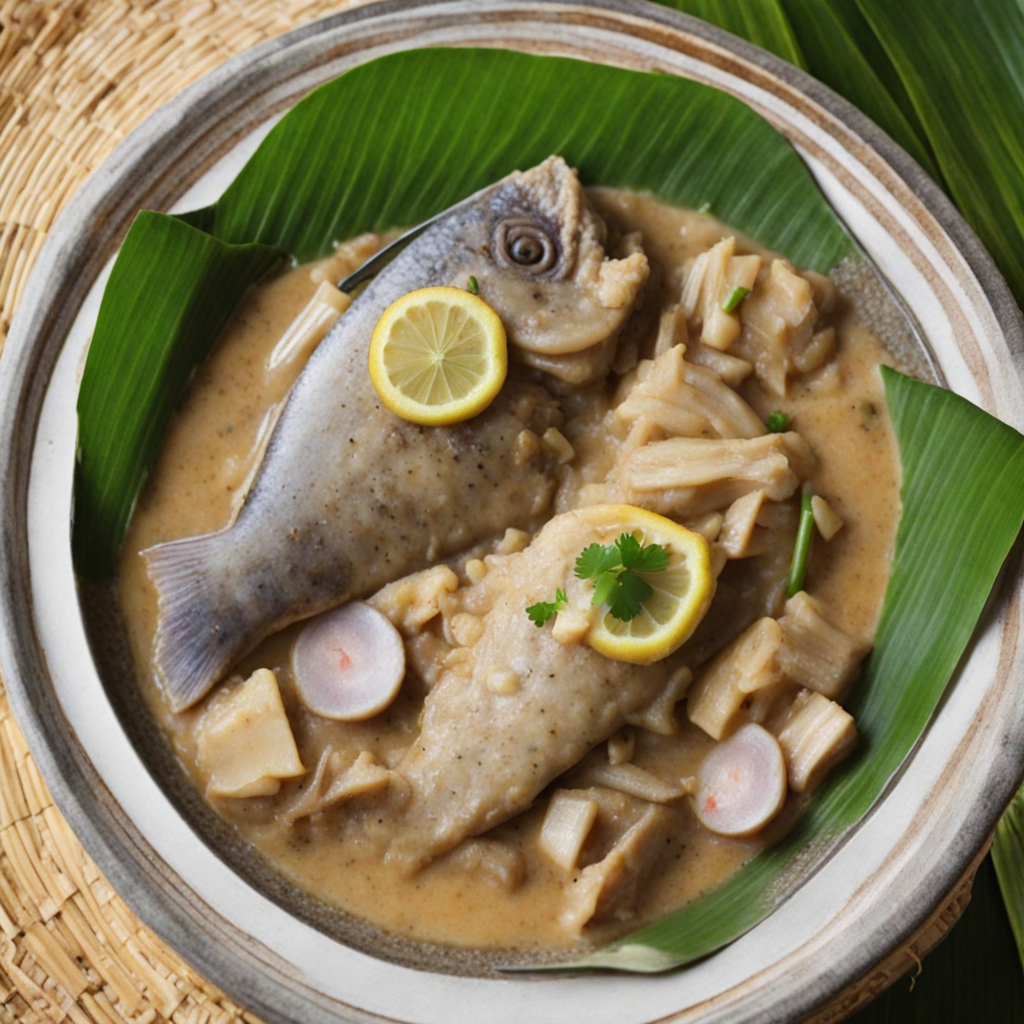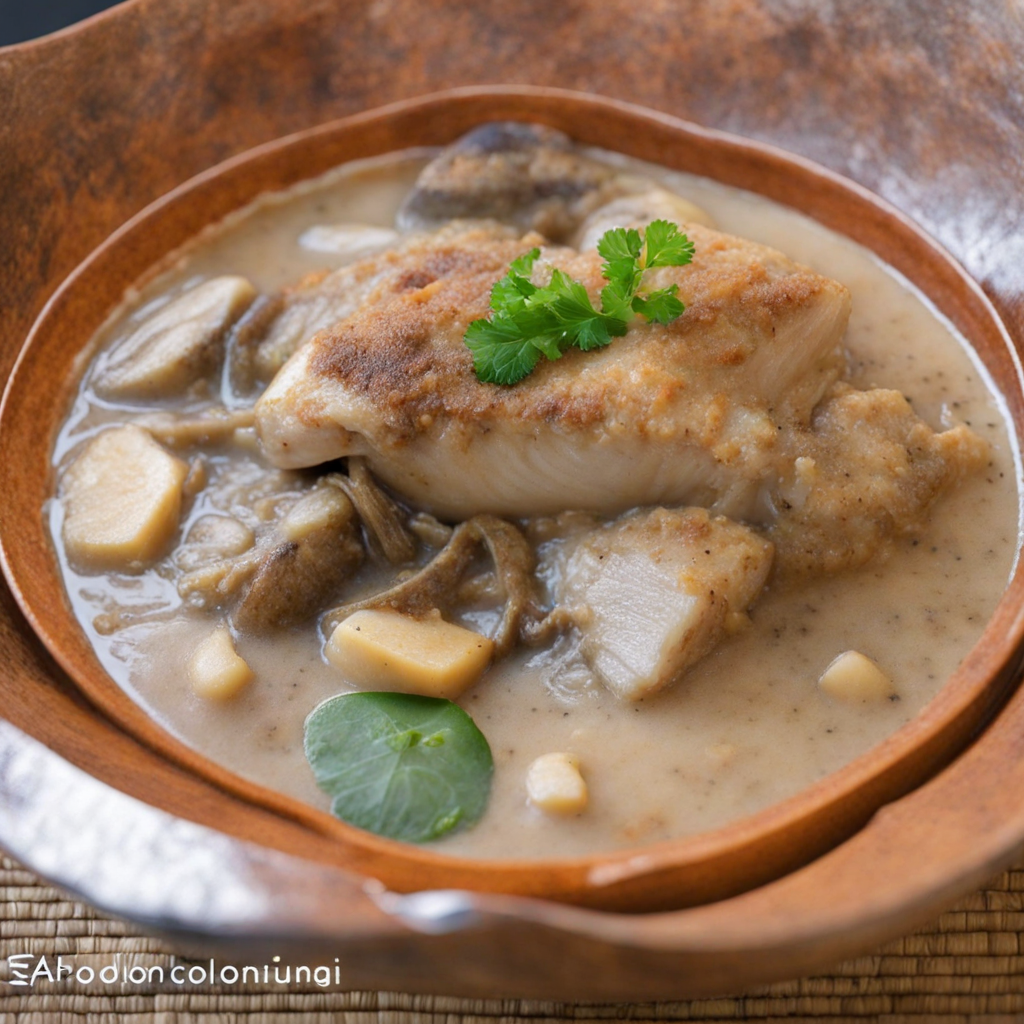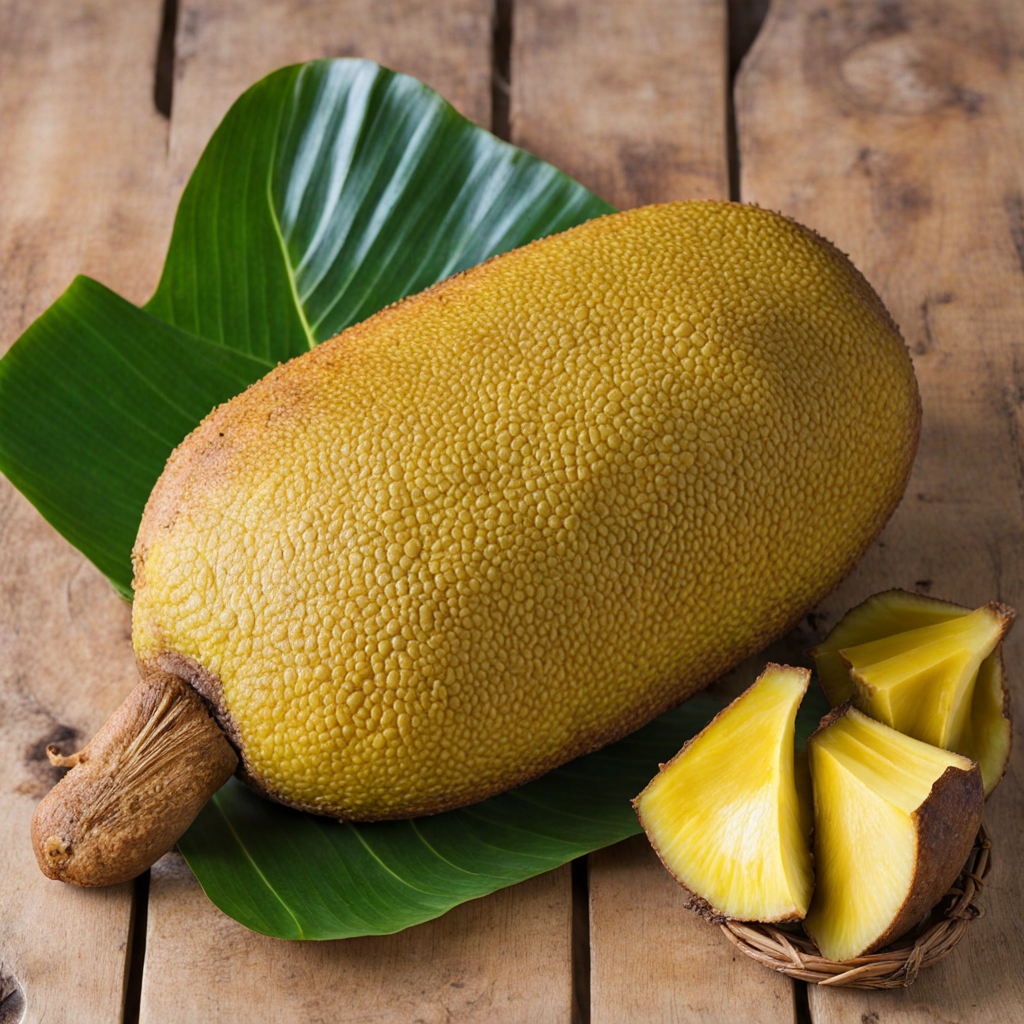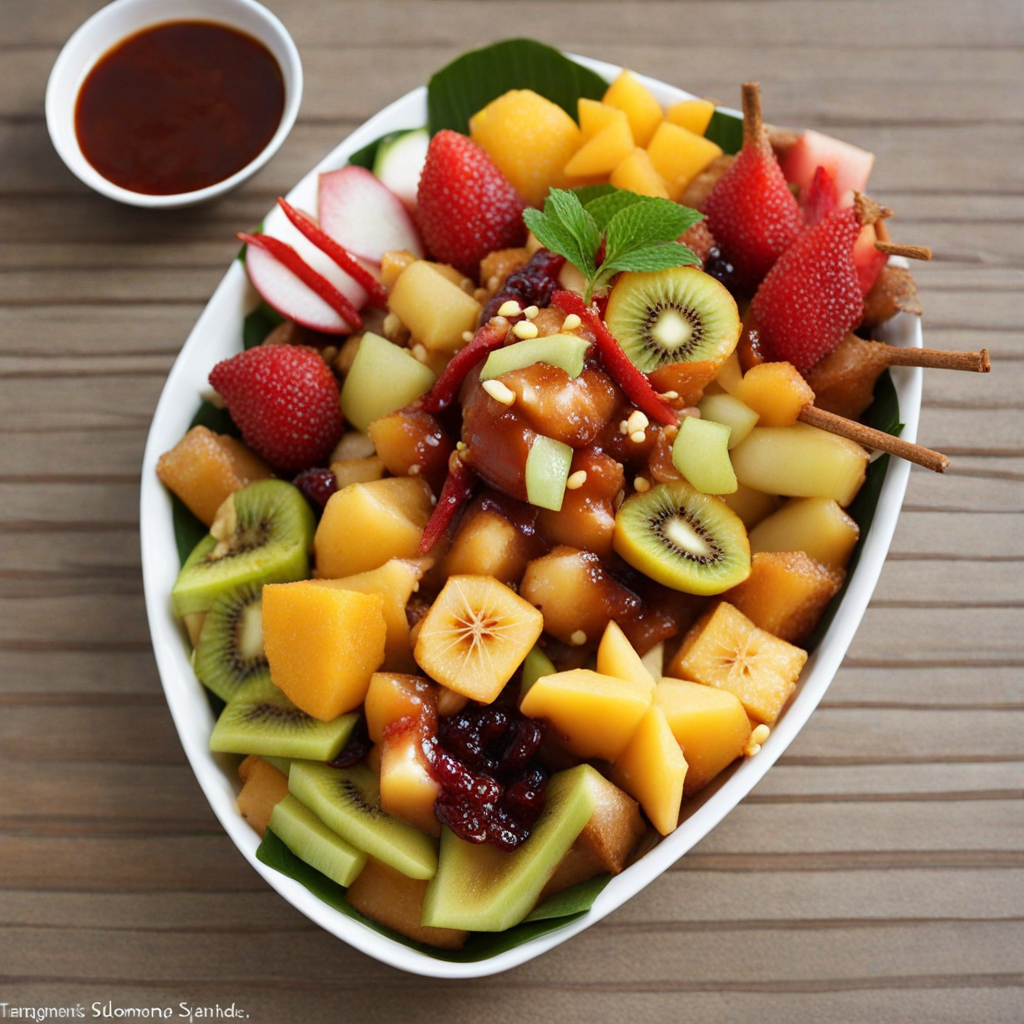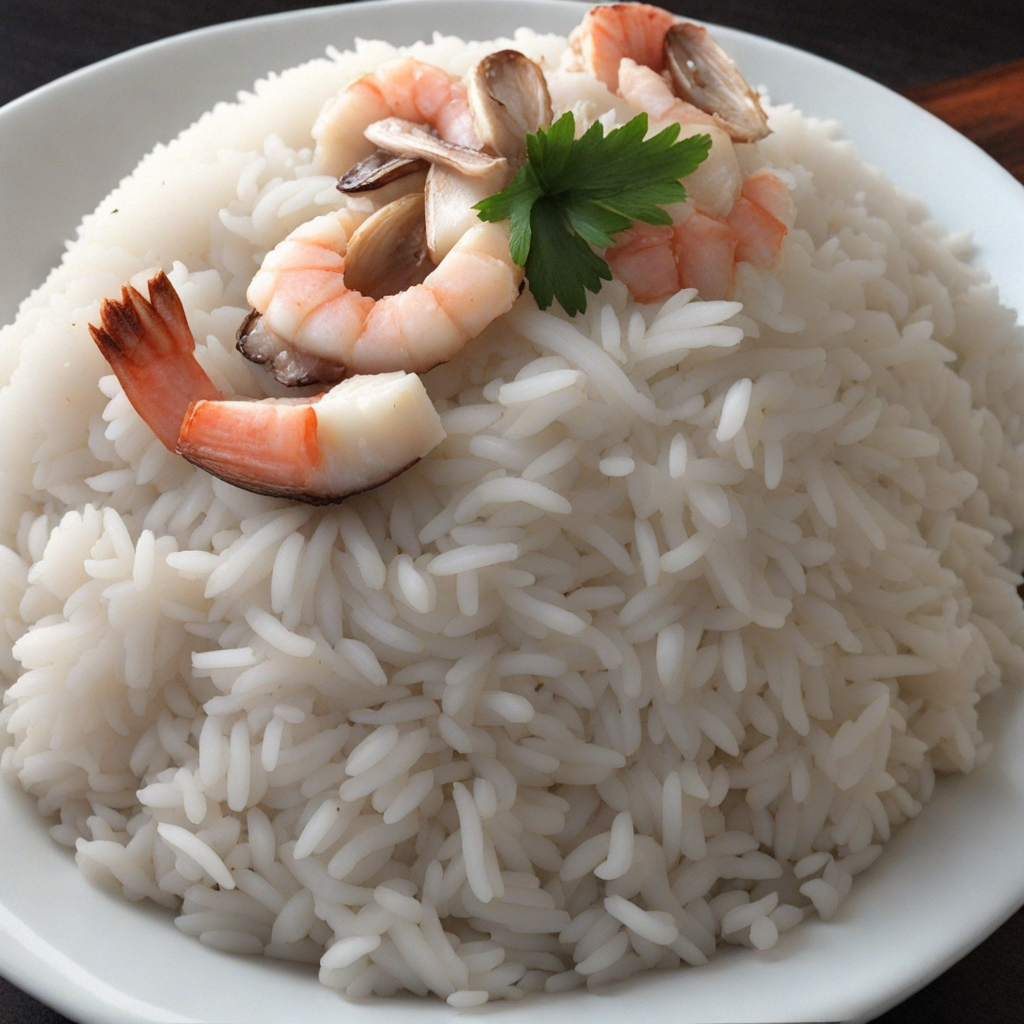Fish and Taro
Fish and Taro is a traditional dish from the Solomon Islands that beautifully showcases the region's abundant natural resources. The dish typically features fresh, locally-caught fish, often marinated with coconut milk and a blend of aromatic spices. This combination not only enhances the fish's delicate flavor but also infuses it with the creamy richness that is characteristic of many Solomon Island dishes. The fish is usually grilled or steamed, allowing it to retain its moisture while developing a slightly smoky or savory taste, creating a perfect balance with the sweet notes of the taro. Taro, a starchy root vegetable, serves as a wonderful accompaniment to the fish. When cooked, it becomes tender and creamy, with a subtle nutty flavor that complements the fish perfectly. The preparation of taro can vary, but it is commonly boiled or mashed, sometimes mixed with coconut milk to enhance its flavor and texture. This dish is often garnished with fresh herbs and served alongside a vibrant salad made from local vegetables, adding a refreshing crunch and a burst of color to the plate. The experience of eating Fish and Taro is not just about the flavors, but also about the connection to the land and sea that the Solomon Islands are known for. Each bite transports you to the lush landscapes and crystal-clear waters of this beautiful archipelago. The simplicity of the ingredients, combined with the traditional cooking methods passed down through generations, makes Fish and Taro a delightful exploration of the culinary heritage of the Solomon Islands, inviting food lovers to savor the essence of this tropical paradise.
How It Became This Dish
The Culinary Journey of Fish and Taro in the Solomon Islands The Solomon Islands, an archipelago of over 900 islands in the South Pacific, is a vibrant tapestry of cultures and traditions, where the ocean’s bounty meets the earth’s harvest. Among the many culinary delights that emerge from this region, the combination of fish and taro holds a special place in the hearts and kitchens of the Solomon Islanders. This dish is not merely a meal; it embodies the history, culture, and identity of the people. #### Origins: A Deep Connection with Nature The origins of fish and taro in the Solomon Islands can be traced back to the ancient practices of the indigenous Melanesian peoples. The islands are surrounded by rich marine ecosystems, providing an abundance of fish, while the volcanic soil is ideal for growing taro, a staple root vegetable. Taro (Colocasia esculenta) is believed to have been cultivated in the region for over 2000 years, stemming from early agricultural practices that relied heavily on the delicate balance between land and sea. Fish, on the other hand, has been a vital source of protein for centuries. The coastal communities have developed intricate fishing techniques, including netting, spearing, and trapping. The diverse marine life in the surrounding waters, such as snapper, barramundi, and mackerel, contributes to a rich culinary tradition. The symbiotic relationship between the ocean and the land laid the groundwork for the emergence of fish and taro as a beloved dish. #### Cultural Significance: A Culinary Tradition In Solomon Island culture, food is more than sustenance; it is a means of expressing identity, community, and tradition. The preparation and sharing of fish and taro resonate deeply within the cultural fabric of the islands. This dish is often served during communal gatherings, celebrations, and rituals, symbolizing unity and abundance. Taro is not merely a food item; it is steeped in cultural significance. Within many communities, taro is seen as a sacred plant, associated with ancestral spirits and traditional agricultural practices. It is often included in ceremonies and rituals, reflecting its importance in social and spiritual life. When paired with fish, it creates a meal that is both nourishing and emblematic of the Solomon Islanders’ connection to their environment. #### Development Over Time: Adaptation and Innovation The history of fish and taro in the Solomon Islands is also one of adaptation and innovation. As the islands encountered various external influences through trade and colonization, the culinary practices evolved. European colonizers introduced new ingredients and cooking techniques, which were gradually incorporated into local traditions. For instance, the arrival of coconut and various spices from Southeast Asia enriched the flavor profiles of traditional dishes. The fusion of these influences led to new cooking methods, such as frying and baking, which have become popular in contemporary kitchens. Today, fish and taro can be prepared in a myriad of ways, from traditional steaming in coconut leaves to modern interpretations that incorporate global flavors. In recent years, there has been a renewed interest in traditional foods among the younger generations. As globalization spreads Western fast-food culture across the globe, the Solomon Islanders are increasingly embracing their culinary heritage, seeking to preserve and celebrate traditional dishes like fish and taro. This revival is not just about nostalgia; it’s a conscious effort to maintain cultural identity in a rapidly changing world. #### Modern Variations and Global Influence Contemporary preparations of fish and taro reflect a blend of traditional and modern culinary practices. In urban areas, you might find fish and taro served with a variety of sauces, highlighting local ingredients like fresh herbs, chili, and lime. The use of coconut milk to create rich, creamy sauces is a popular variation, adding depth and complexity to the dish. Moreover, the global influence of food tourism has introduced fish and taro to a wider audience. Travelers seeking authentic experiences in the Solomon Islands often find themselves drawn to local markets and eateries, eager to taste the traditional flavors of the islands. Culinary festivals and events have emerged, celebrating local food heritage and inviting chefs to showcase their creativity with traditional ingredients. #### Environmental and Societal Challenges Despite the rich culinary heritage associated with fish and taro, the Solomon Islands face significant environmental and societal challenges that impact food security and traditional practices. Climate change poses a threat to coastal communities, affecting fish populations and the viability of taro cultivation. Rising sea levels and increased storm intensity can damage agricultural lands, making it difficult for communities reliant on these resources. Moreover, the younger generation is increasingly drawn to urban life, leading to a gradual decline in traditional farming and fishing practices. This shift raises concerns about the future of culinary traditions like fish and taro. However, many communities are taking proactive steps to address these issues. Initiatives aimed at sustainable fishing practices and preserving traditional agriculture are being implemented to ensure that the legacy of fish and taro continues for future generations. #### Conclusion: A Culinary Heritage Worth Preserving The story of fish and taro in the Solomon Islands is one of resilience, adaptation, and cultural pride. As a dish that encapsulates the essence of the islands, it reflects the harmonious relationship between the people and their environment. Fish and taro are not just food; they are a testament to the enduring spirit of the Solomon Islanders, a celebration of their history, and a symbol of their identity. As we witness the evolution of culinary traditions in a globalized world, it is essential to acknowledge and preserve the rich heritage of dishes like fish and taro. By embracing traditional practices and adapting to contemporary influences, the people of the Solomon Islands continue to honor their past while paving the way for a sustainable future. Through food, they tell their story—a story that deserves to be shared and savored by all.
You may like
Discover local flavors from Solomon Islands


